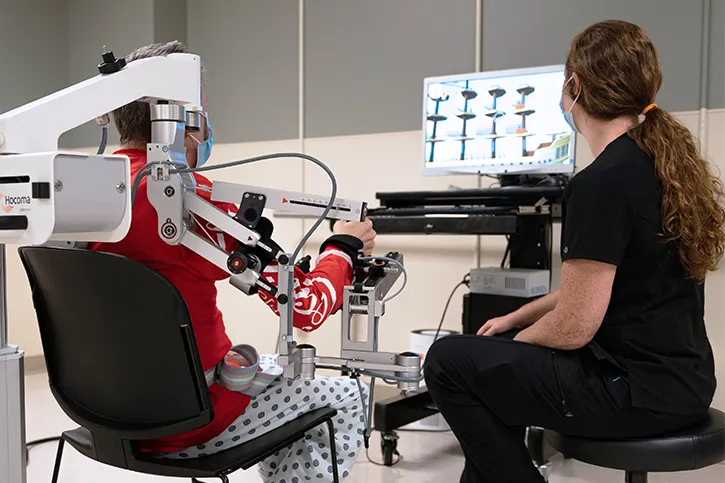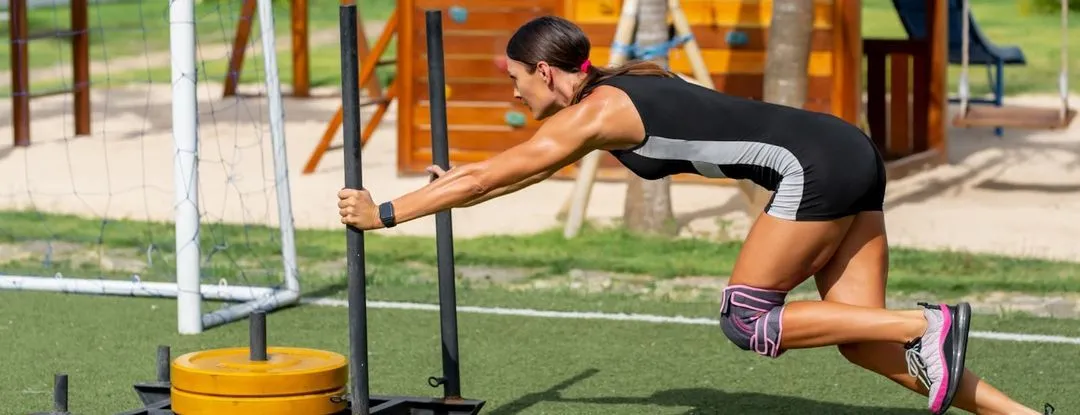
Rehabilitation programs play a crucial role in helping individuals recover from injuries, illnesses, or surgeries and regain their independence. Understanding the importance of these programs is essential for both healthcare providers and patients. From improving physical functioning to enhancing overall quality of life, rehabilitation programs offer a wide range of benefits. However, the key to a successful rehabilitation program lies in its components and tailored approach. Setting achievable goals, involving healthcare professionals, and utilizing advanced technology are vital components that contribute to the effectiveness of the program. Additionally, tailoring the program to meet the specific needs of each patient, implementing evidence-based practices, and involving family and caregivers in the process are also crucial for the program's success. Overcoming challenges, evaluating effectiveness, and ensuring continuity of care are further aspects that need to be considered. By integrating technology and staying updated with the latest advancements in the field, rehabilitation programs can continue to evolve and provide better outcomes for patients.
Rehabilitation programs play a crucial role in helping individuals regain or improve their physical, cognitive, and emotional abilities after an injury, illness, or surgery. These programs are designed to optimize patients' functional independence and overall well-being.
The benefits of rehabilitation programs extend beyond just physical recovery. They also contribute to enhancing the patient's quality of life by addressing not only their physical limitations but also providing psychological support and counselling. This holistic approach ensures that patients receive comprehensive care tailored to their individual needs.
There are various types of rehabilitation programs available, depending on the specific needs of the individual. These can range from physiotherapy for mobility issues to speech therapy for communication difficulties. By understanding the different types of rehabilitation programs, healthcare providers can recommend the most suitable approach for each patient.

Setting achievable goals is crucial in any successful rehabilitation program. These goals should be realistic and attainable, motivating for the individual to progress and improve. By developing specific milestones and targets, patients are more likely to stay motivated throughout the program.
The involvement of healthcare professionals is another key component. The expertise and guidance of physicians, physical therapists, occupational therapists, and other healthcare professionals play a vital role in designing and monitoring the rehabilitation program. Their knowledge ensures that the program is tailored to meet the needs of each patient while also ensuring safety and effectiveness.
Utilizing advanced technology in rehabilitation can significantly enhance outcomes. Whether it's using robotic devices for assistance or incorporating virtual reality techniques for therapy, advanced technology allows for targeted exercises and precise measurement of progress. This not only improves engagement but also provides quantitative data to track improvements.

To ensure the success of a rehabilitation program, it is crucial to implement evidence-based practices. This involves utilizing interventions that have been proven effective through research and clinical studies. By incorporating these research-based rehabilitation interventions, individuals undergoing rehabilitation can benefit from treatments and techniques that have been shown to produce positive outcomes.
Another important aspect of implementing evidence-based practices in rehabilitation is the use of data to track progress. This allows healthcare professionals to monitor the effectiveness of different interventions and make adjustments as necessary. Through the collection and analysis of data, practitioners can ensure that their patients are receiving the most appropriate and beneficial treatments for their specific needs.
Furthermore, staying up-to-date with the latest medical advancements is essential for implementing evidence-based practices in rehabilitation. By integrating new technologies, treatment modalities, and therapeutic approaches into rehabilitation programs, healthcare providers can continually improve patient outcomes and experiences. Embracing innovation in the field of rehabilitation ensures that individuals receive care that is informed by current best practices.
Educating family members about the rehabilitation program is crucial for their understanding and support. This can include explaining the goals of the program, specific exercises or therapies being used, and any potential challenges or setbacks that may arise. By providing this information, family members can better understand their loved one's journey and be better equipped to provide ongoing support.
Providing support for caregivers is essential to ensure they have the resources they need to assist with the rehabilitation process. This could involve offering training on how to perform certain tasks or exercises at home, connecting them with community resources for additional assistance, and arranging respite care if needed. Caregivers play a vital role in facilitating recovery, so it's important to prioritize their well-being as well.
Incorporating feedback from family members into the rehabilitation program can lead to more tailored and effective care. By regularly soliciting input from caregivers and other family members, healthcare providers can gain valuable insights into what is working well, what areas need improvement, and any concerns or preferences that should be addressed. This collaborative approach helps ensure that the rehabilitation process is truly patient-centered.
One of the biggest challenges in implementing a successful rehabilitation program is overcoming resistance from patients. It is common for individuals undergoing rehabilitation to be hesitant or resistant towards the process, whether it's due to fear of pain, discomfort, or scepticism about the effectiveness of the program. Healthcare professionals and caregivers need to address these concerns with empathy and understanding, while also providing education on the benefits and goals of the rehabilitation program.
Another challenge that may arise during a rehabilitation program is dealing with setbacks. Patients may experience periods where they do not progress as expected or face obstacles that hinder their recovery. This can be frustrating for both patients and healthcare providers but it's crucial to approach setbacks as opportunities for learning and adjustment. By identifying the root cause of setbacks and modifying the rehabilitation plan accordingly, patients can regain momentum on their road to recovery.
Furthermore, adapting a rehabilitation program to accommodate changing needs is essential for its success. Patients' conditions may evolve, requiring adjustments in their treatment plans. Flexibility in tailoring exercises, therapies, or interventions based on individual progress or regressions will ensure that patients are receiving optimal care throughout their rehabilitative journey.
Measuring patients' progress is a crucial component in evaluating the effectiveness of rehabilitation programs. Through regular assessments and tracking of physical, cognitive, and emotional improvements, healthcare providers can gauge the impact of the program on individual patients. This data-driven approach helps in identifying areas that require adjustment or modification to ensure optimal results for each participant.
Another aspect of evaluating rehabilitation programs involves assessing their impact on patients' daily activities. By observing how well individuals can perform tasks essential for independent living, such as feeding themselves or moving around without assistance, healthcare providers can determine the practical benefits derived from the program. Understanding these real-life outcomes is key to tailoring rehabilitation plans to suit specific needs and improve overall quality of life.
In addition to objective measurements, collecting feedback from both patients and healthcare providers plays a vital role in evaluating rehabilitation programs. Patients' perspectives provide valuable insights into their experiences with different aspects of the program, enabling adjustments that cater more effectively to their requirements. Similarly, input from healthcare professionals who directly oversee patient care offers an informed assessment of what works well and where improvements could be made to enhance overall program efficacy.
Transitioning patients to post-rehabilitation care is crucial in ensuring the success of their rehabilitation program. This involves establishing a comprehensive plan for ongoing support and guidance, which may include regular check-ins, follow-up appointments, and access to resources such as support groups or counselling services. By facilitating a smooth transition to aftercare, we can prevent relapse and help patients maintain the progress they have made during their rehabilitation.
Providing ongoing support and guidance is essential for sustaining the positive outcomes achieved in a rehabilitation program. This can involve continued monitoring of patients' physical, emotional, and mental well-being, as well as offering assistance with practical aspects of daily life that could impact their recovery. By staying connected with individuals who have completed the program, we can help them navigate potential challenges and reinforce healthy behaviours beyond the formal duration of their rehabilitation.
Preventing relapse and maintaining progress requires a collaborative effort between healthcare providers, family members, friends, and other relevant stakeholders. It is important to recognize that recovery is an ongoing process that extends beyond the duration of a structured rehabilitation program. By fostering a network of continuous support within the community, we can create an environment where individuals feel empowered to overcome obstacles and sustain their commitment to living a fulfilling life free from substance abuse or other debilitating conditions.
In the modern landscape of healthcare, integrating technology into rehabilitation programs has become increasingly essential. One such method is the use of virtual reality to create engaging and effective rehabilitation exercises. By immersing patients in simulated environments, virtual reality can encourage greater patient participation and motivation during their recovery process.
Another technological advancement is the implementation of telemedicine for remote monitoring of patients undergoing rehabilitation. This allows healthcare professionals to remotely monitor a patient's progress and provide timely feedback, ultimately improving the overall quality of care delivered.
Furthermore, wearable devices have proven to be valuable tools for tracking an individual's progress throughout their rehabilitation journey. These devices can provide real-time data on movement patterns and vital signs, allowing therapists to make informed decisions when tailoring personalized treatment plans.
At Prime Chiro, we understand the importance of finding the best chiropractor near you in Lansvale NSW and nearby areas of Fairfield, Liverpool, and Cabramatta. Our team of experienced professionals is dedicated to providing top-quality chiropractic care and consultation services to help individuals in our community achieve optimal health and wellness. Whether you are seeking relief from pain, looking to improve your overall well-being, or simply interested in maintaining a healthy lifestyle, Prime Chiro is here to help. Contact us today to schedule a consultation and take the first step towards a healthier, happier you.
A rehabilitation program is a structured plan designed to help individuals recover from physical or mental health conditions, injuries, or addictions. It typically involves a combination of therapies, exercises, counselling, and support to promote healing and improve overall well-being.
A rehabilitation program can benefit individuals of all ages who are experiencing physical or mental health challenges, recovering from injuries or surgeries, or struggling with substance abuse or addiction. It is tailored to meet the specific needs of each individual and aims to enhance their quality of life and functional abilities.
The duration of a rehabilitation program can vary depending on the nature and severity of the condition being treated. It can range from a few weeks to several months or even years. The length of the program is determined by the progress made by the individual and their specific goals.
A rehabilitation program may include a variety of therapies such as physical therapy, occupational therapy, speech therapy, cognitive-behavioral therapy, and counseling. The specific therapies included in the program depend on the individual's needs and goals, as well as the expertise of the healthcare professionals involved.
To find a suitable rehabilitation program, it is recommended to consult with healthcare professionals such as doctors, therapists, or addiction specialists. They can assess your specific needs and recommend appropriate programs or facilities that align with your goals. It is important to consider factors such as the program's reputation, accreditation, success rates, and available resources before making a decision.
TL;DR: A successful rehabilitation program involves understanding its importance, incorporating key components, creating tailored programs, implementing evidence-based practices, involving family and caregivers, addressing challenges, evaluating effectiveness, ensuring continuity of care, and integrating technology for optimal results. This includes setting achievable goals, involving healthcare professionals, utilizing advanced technology, customizing exercises, providing psychological support, tracking progress, educating family members, and providing ongoing support for a successful rehabilitation journey.